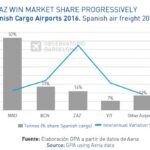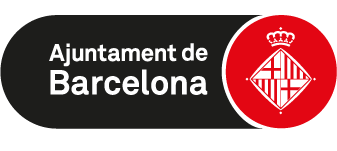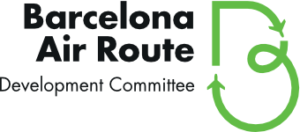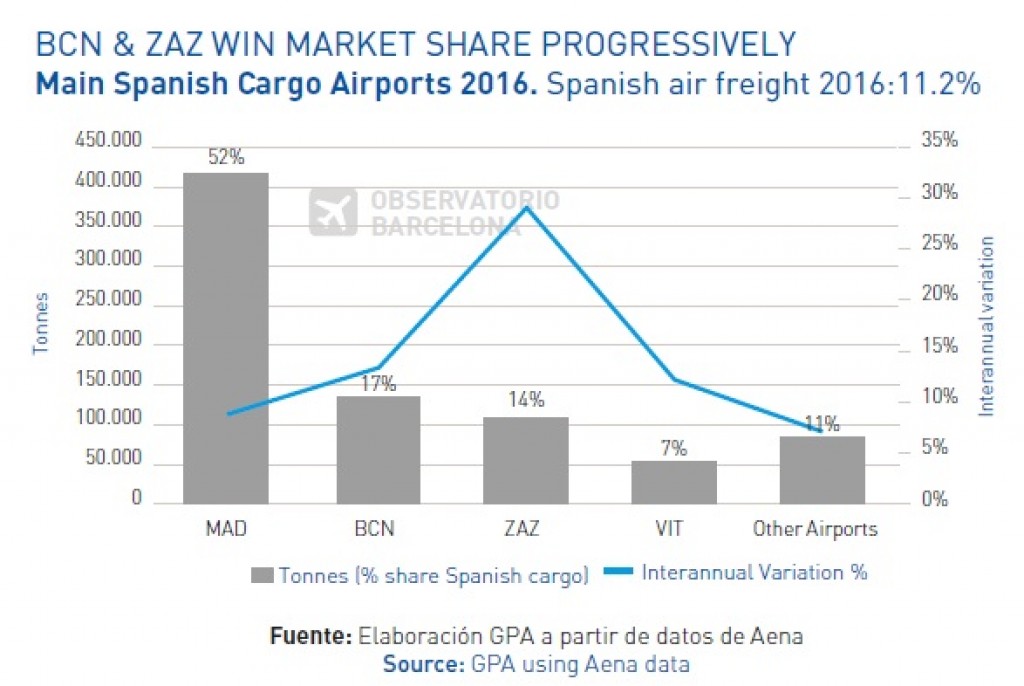
Spanish Air Freight
Spanish air freight grew by 11.2% in 2016 for a total of 800,000 tonnes.
- Spanish air freight grew by 11.2% in 2016 for a total of 800,000 tonnes. In H1 2017 Spanish air freight has grown by 15.5%. The top 5 cargo airports of Spain concentrate 89% of the Spanish air freight. Madrid and Barcelona are general cargo airports, while Zaragoza acts as an Inditex (textiles) and Caladero (fresh fish for Mercadona) hub. Vitoria is the DHL hub for Spain. Madrid is the main cargo hub, but its position has been slowly eroded by BCN and ZAZ in the last 10 years.
- Fashion is the main Spanish air freight products by weight, followed by machinery & metal products and foodstuffs. In the Fashion and in the Pharma & Chemical sectors, Spain is an net exporter, while imports and exports are balanced for the Metal Manufactures and Electrical sectors.
- Spanish air freight has an average value of 52 €/Kg. Pharma & Chemical products are the most valuable (100 €/Kg) along with Jewelry (418 €/kg) even if the later only represents 1% of the Spanish air freight. Metal Manufactures (93 €/kg) and Electrical products (84 €/kg) are the other high value items, while Fashion (30 €/Kg), Foodstuffs (8 €/Kg) and other products (14 €/Kg) are the lower end of the Spanish air freight.
- Fashion and Pharma & Chemicals are leading the growth of the Spanish air market in volume, while Metal Manufactures are the fastest growing in terms of value.
- North America (the US, Mexico and Canada) is the main international partner region for the Spanish air freight, followed by the Chinese market. India and Bangladesh are key import markets, linked to pharmaceuticals and fashion respectively. Japan is one of the primary uncovered export markets for Spanish products, especially for the region of Barcelona (Catalonia).
Source: Barcelona Air Traffic Intelligence Unit/ September 2017
Barcelona Air Route Development Committee
promotes Barcelona Airport intercontinental flights
